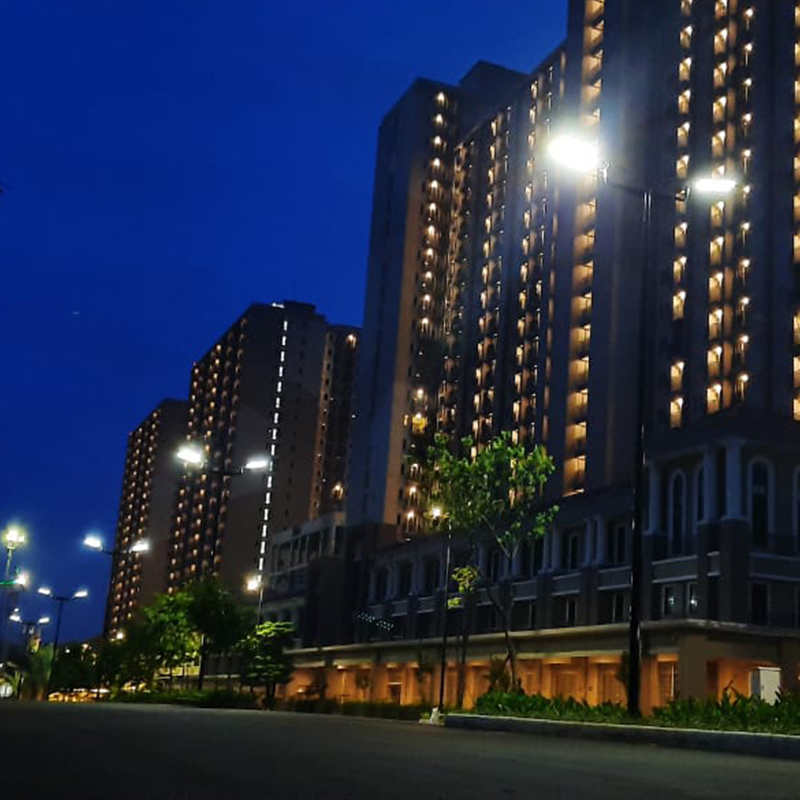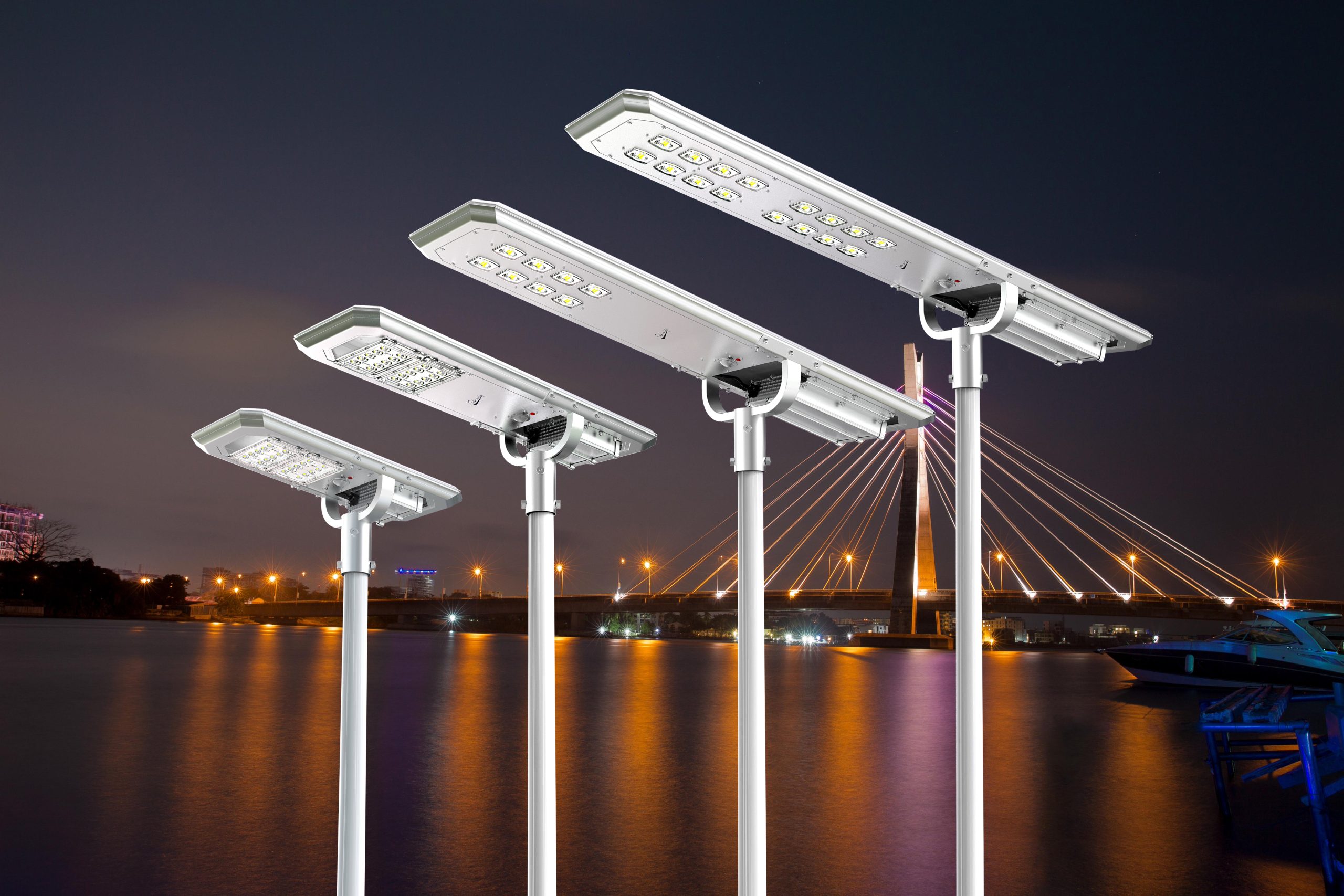Solar street light lighting methods
Single-sided interactive lighting: This is suitable for locations with low pedestrian traffic, such as rural roads. The lamp is installed on one side of the road only, providing one-way
lighting.Bilateral symmetrical lighting: This type of lighting is suitable for locations with high pedestrian traffic, such as main urban roads. The lamps are installed on both sides of the road to provide two-way lighting.
Two-sided cross lighting: This is suitable for roads with a width of 10-15 meters. The lamps are installed on both sides of the road, covering the crossover and providing two-way illumination.
Axially symmetrical lighting: This method is suitable for locations with high pole heights, such as elevated roads. The lamp is mounted at the top of the pole to provide a more uniform lighting coverage.

In the case of a 20m wide road, it should be considered as the main road and therefore requires double side lighting. In addition, the road lighting requirements mainly include illuminance requirements and illuminance uniformity, of which the uniformity should generally be above 0.3. The greater the uniformity, the higher the scattering of the solar street light and the better the lighting effect.
Therefore, we can assume a double row of symmetrical lighting deployment, the height of the pole is at least 1/2 of the road width, so the height of the pole should be 12-14m; assuming a 14m pole is used, the installation spacing of the street light is generally about 3 times the height of the pole, so the spacing is at least 40m; in this case, the power of the solar street light should be above 200W to meet the main road lighting requirements.
Illumination and power are related to the installation height of the light. For solar street lights, we want the angle of the light to be as large as possible so that uniformity is ideal and to extend the distance of the pole, reduce the number of poles installed and save costs.

Solar street light pole installation height
axially symmetrical lighting is a common lighting design for street lighting poles with high heights. This type of light distribution provides a more uniform lighting coverage area and is suitable for street lighting poles with a height of 4 meters or more.
When determining the installation height of a solar street light, the formula H ≥ 0.5R can be used. Where R is the radius of the lighting area and H is the height of the street light pole. This formula is usually used in cases where the height of the street light pole is between 3 and 4 meters.
If the height of the street lighting pole is higher, for example above 5 meters, then a liftable light panel can be used to adjust the lighting coverage to meet the lighting needs of different situations. The liftable light panel can be adjusted up and down on the pole to achieve the best possible lighting effect.
Take SRESKY ATLAS all-in-one solar street light as an example:
- SSL-32M: 3m pole, pole spacing 15m, 25W solar intelligent street light
- SSL-36M:6m pole, pole spacing 22m,60W solar intelligent street light
- SSL-310M:10m pole, pole spacing 32m,75W solar intelligent street light

For scenic spots, parks and other places with high pedestrian traffic, it is suitable to install solar street lights of about 7 meters, which can provide a sufficient lighting coverage area and better lighting effect.
For rural roads at night, due to the low pedestrian and vehicle traffic, single-sided interactive lighting can be used and installed at a distance of 20-25 meters. An extra street light should be installed at corners to avoid lighting blind spots.
For solar streetlights with a pole height of 8 meters, a streetlight spacing of 25-30 meters should be ensured and cross-lighting should be used on both sides. This method is suitable for roads with a width of 10-15 meters.
For solar street lights with a pole height of 12 meters, a longitudinal spacing of 30-50 meters between street lights should be ensured. Symmetrical lighting should be used on both sides and the width of the road lighting needs to exceed 15 meters.